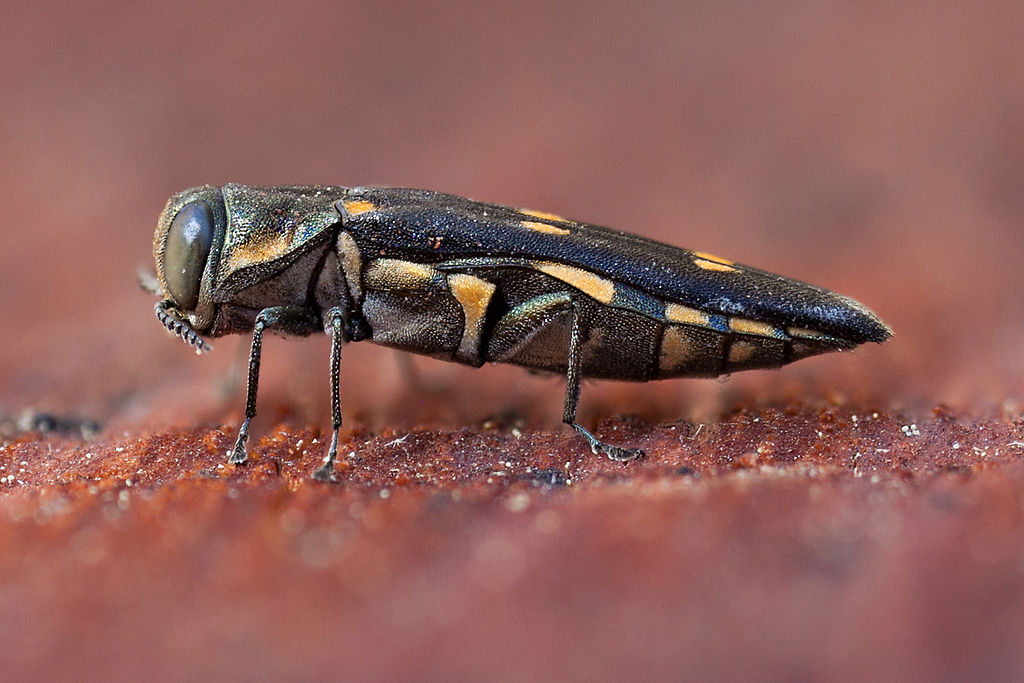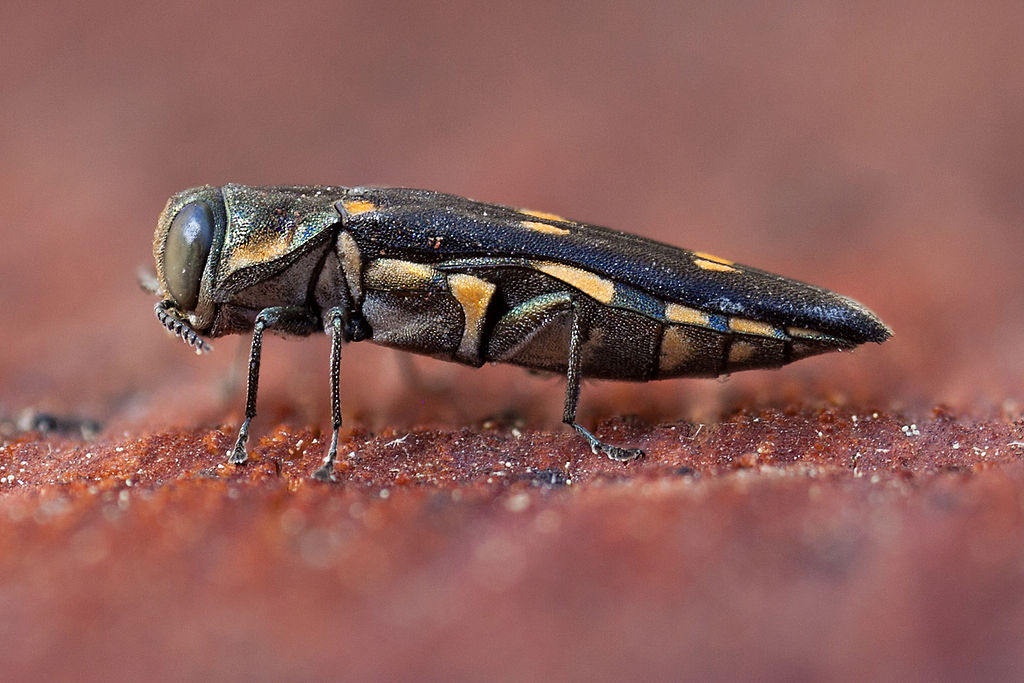
The Del Dios Habitat Protection League is holding a Hands on Training on GSOB and oak tree health on Sunday June 11 at Del Dios Park at 9AM. Free to all, DDHPL is paying! Certified arborist, Bret Hutchinson, has years of GSOB experience from Julian to share.
If you have oaks and want to keep them healthy, you are encouraged to make time Sunday for an GSOB Training and meet us in Del Dios Park at 9AM. Stacy McCline Del Dios Habitat Protection League
Agrilus coxalis is a species of jewel beetle known by the common name goldspotted oak borer. It is a woodboring beetle best known for destroying stands of oak trees in the Cleveland National Forest in San Diego County, California, in the United States and of course our beloved Lake Hodges in Escondido, California.
Significant oak mortality was noted in the area starting in 2002 near Descanso, California.[2] It was thought that drought was causing the decline until surveys revealed evidence of damage to healthy trees.[2] On investigation it was determined that the agent causing the damage was Agrilus coxalis, a beetle not previously noted in the area.[2] The tree species most affected are the coast live oak (Quercus agrifolia) and California black oak (Quercus kelloggii).[2] The canyon live oak (Quercus chrysolepis) and silverleaf oak (Quercus hypoleucoides) are also affected.[1][3] The insect was first seen in the region in 2004 at Cuyamaca Rancho State Park, and it was confirmed to be the cause of oak damage in 2008 when adults and larvae were collected from the host trees.[2]
Little is known about the life history of the insect, whether it is introduced or moving into the area as part of a natural range expansion, or its current distribution. The beetle has been found in Guatemala, Mexico, and Arizona, but it has never been known to cause this sort of oak destruction.[2] However it is thought that the beetle in Arizona is a separate species from the one in Central America, Agrilus auroguttatus.
Since dead oaks were first seen near Descanso, damage was found on 67% of oaks examined in surveys, and about 13% of the trees were dead.[2] The affected region is an area 50 by 40 kilometers mostly within National Forest boundaries in the Peninsular Ranges east of San Diego.[3] Damage from the beetle takes the form of blackened larval feeding galleries revealed in the wood when woodpeckers remove bark, red and black staining on the bark that occurs when sap drains from damaged phloem, thinning grayish crowns on injured trees, and dead twigs and branches.[2] The adult leaves D-shaped exit holes on the outside of the tree.[3]
Initially, it was estimated that 15,000 individual trees have been killed by this pest.[1] On September 3, 2011, the San Diego Union-Tribune published a correction of this estimate by UC Riverside researchers that puts the number at 80,000 trees killed. Dead trees increase the likelihood and severity of wildfire in this already highly fire-prone area.[1]
The adult gold spotted oak borer is dull dark metallic green in color with three characteristic yellow spots on each forewing.[2] It is about a centimeter long.[3] The larva is white and legless and reaches 18 millimeters in length.[3]
Current research is aimed toward locating a predator or parasitoid that preys on the beetle larvae, but will not have serious impact on other native species. Until further study yields suggestions for the management of this pest insect, the US Forest Service advises forestry workers to use containment guidelines now in practice for the control of similar jewel beetle pests, such as the emerald ash borer and bronze birch borer.[3] If the beetle was introduced to the area, it may have come in on firewood.[3][4] Scientists advise against transporting oak wood since it may spread the pest.[5]

 RSS Feed
RSS Feed
